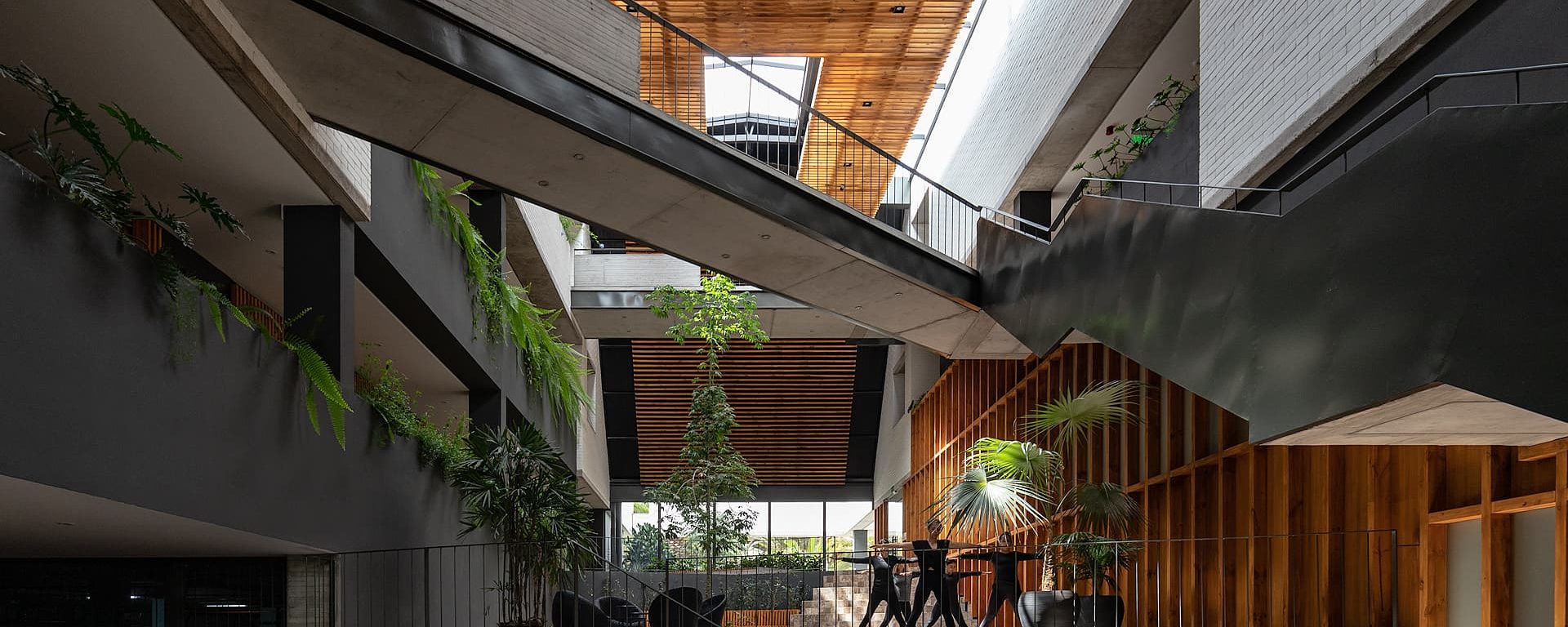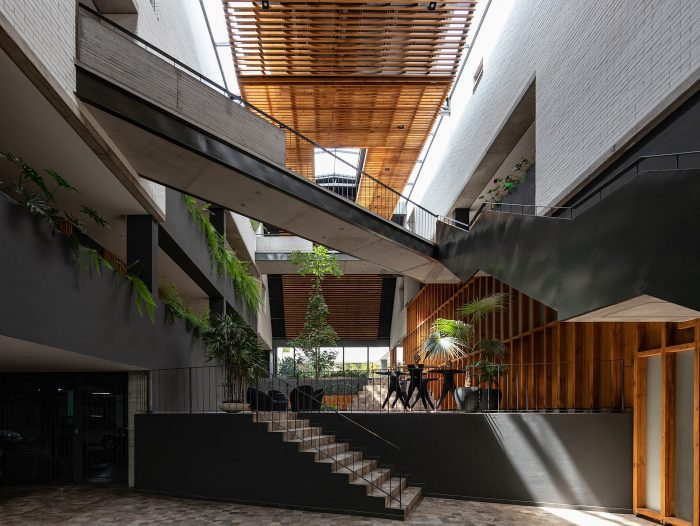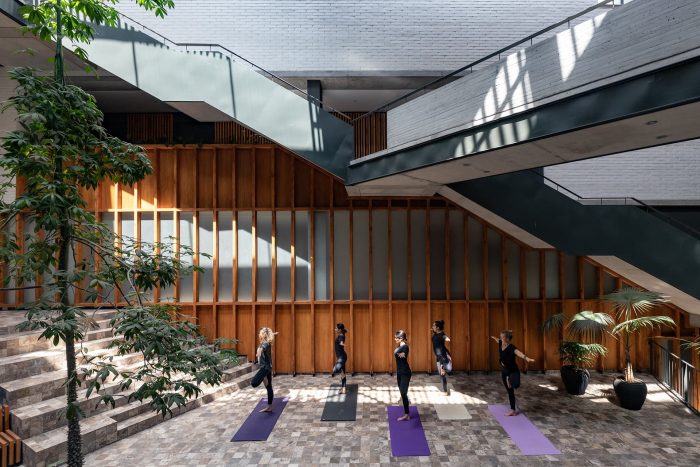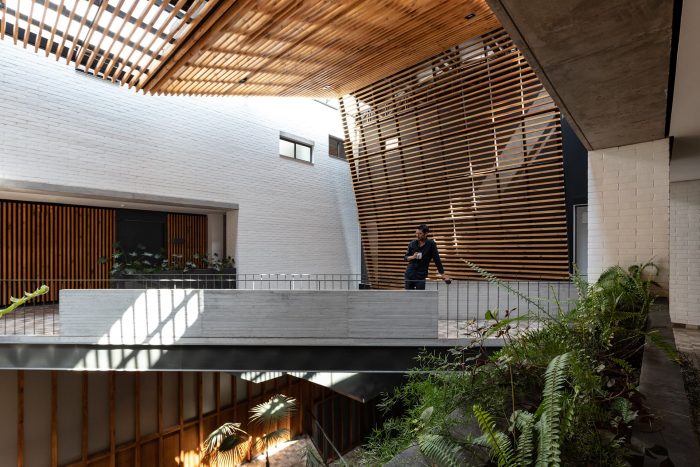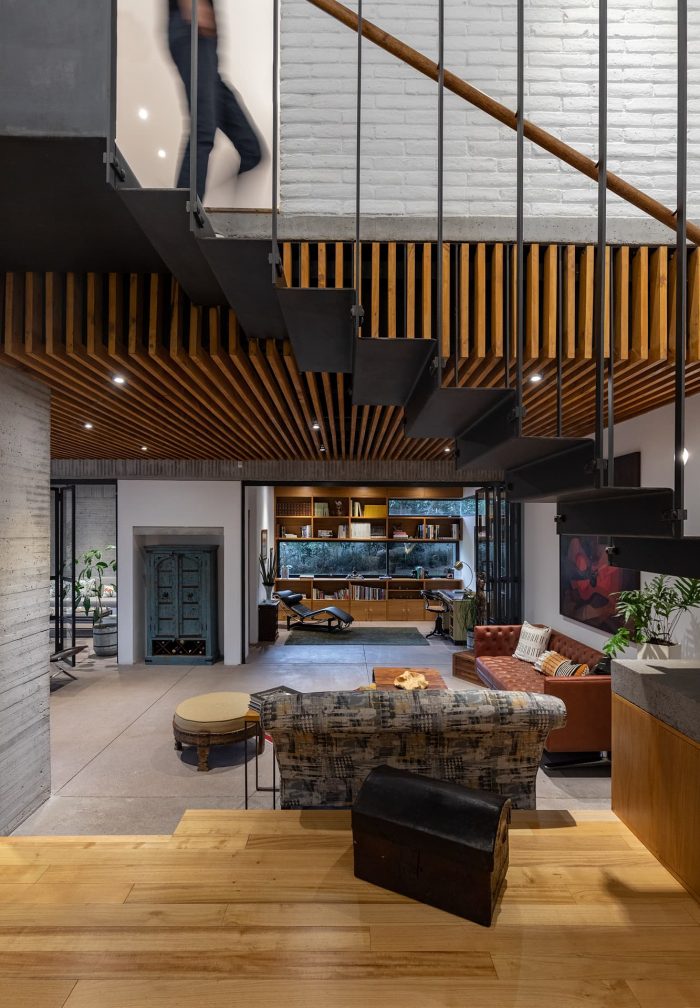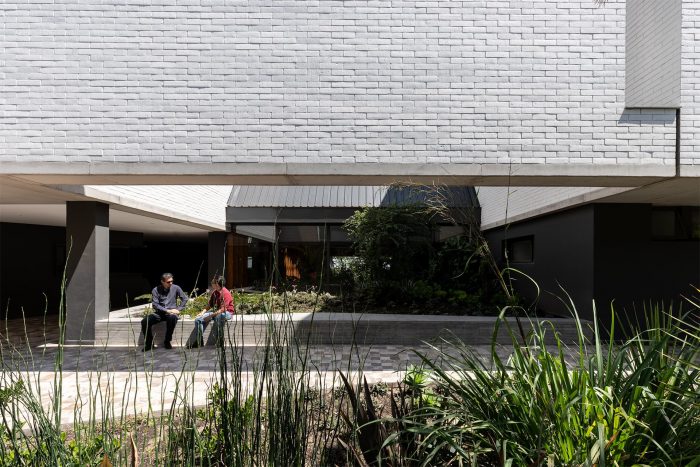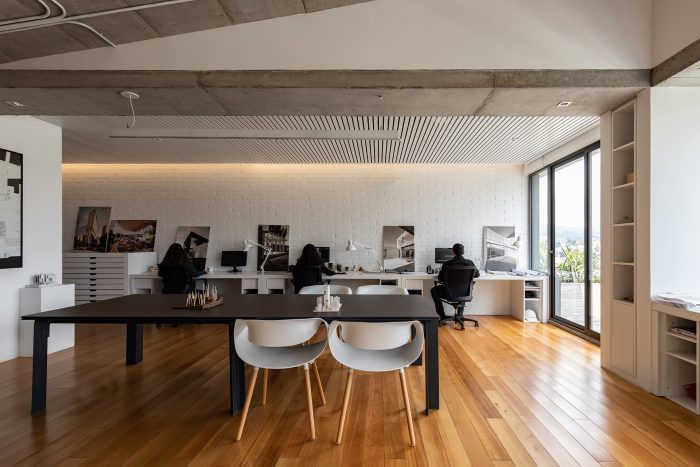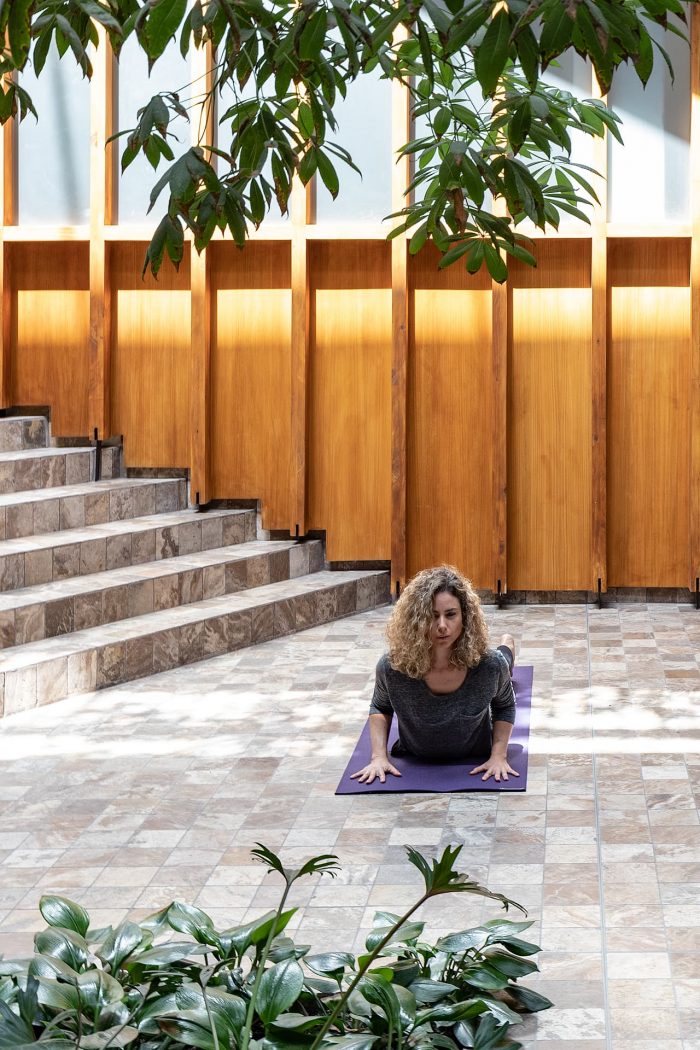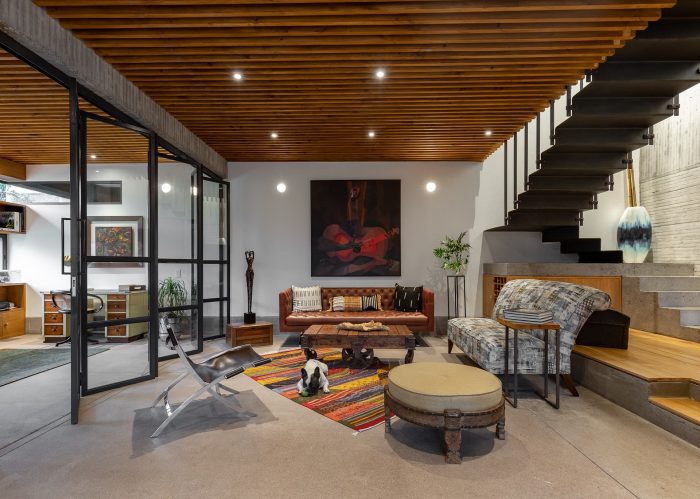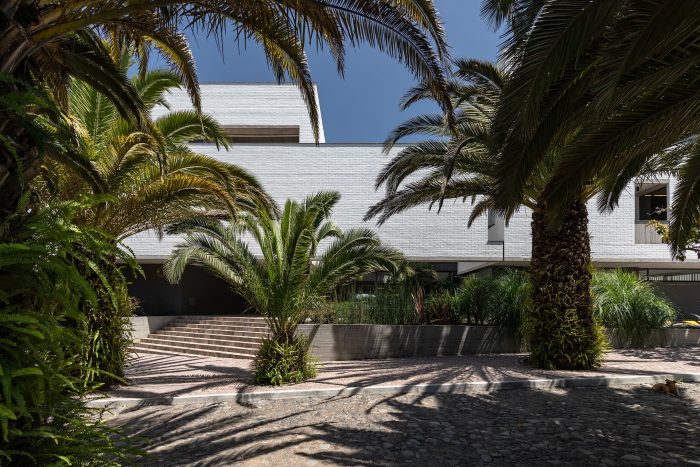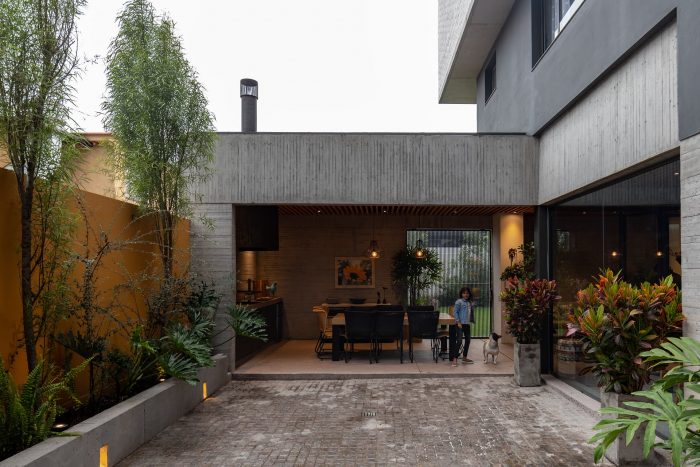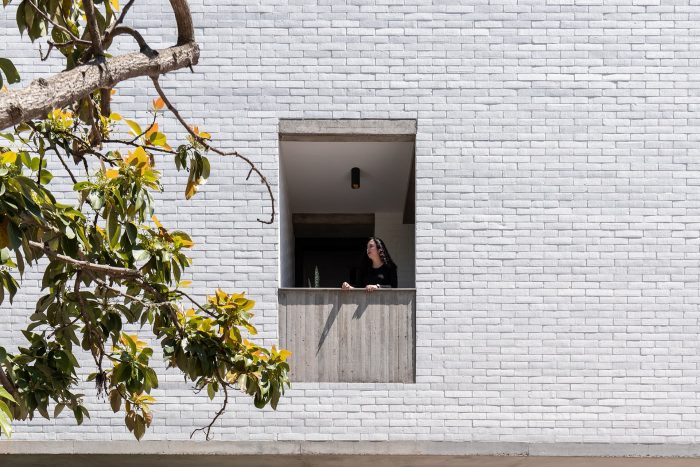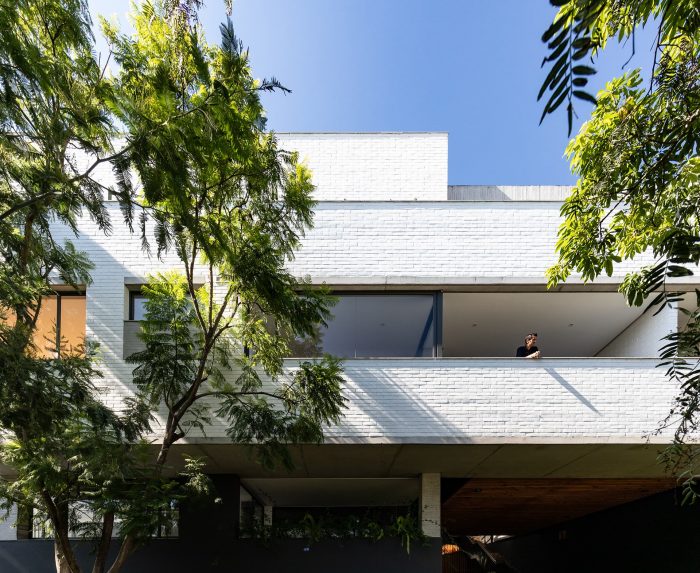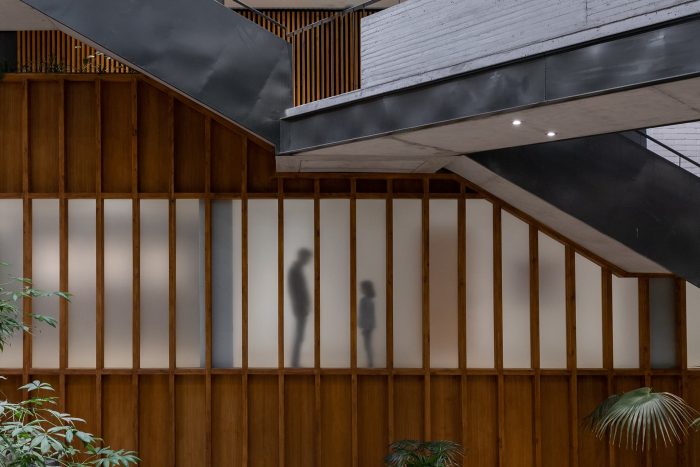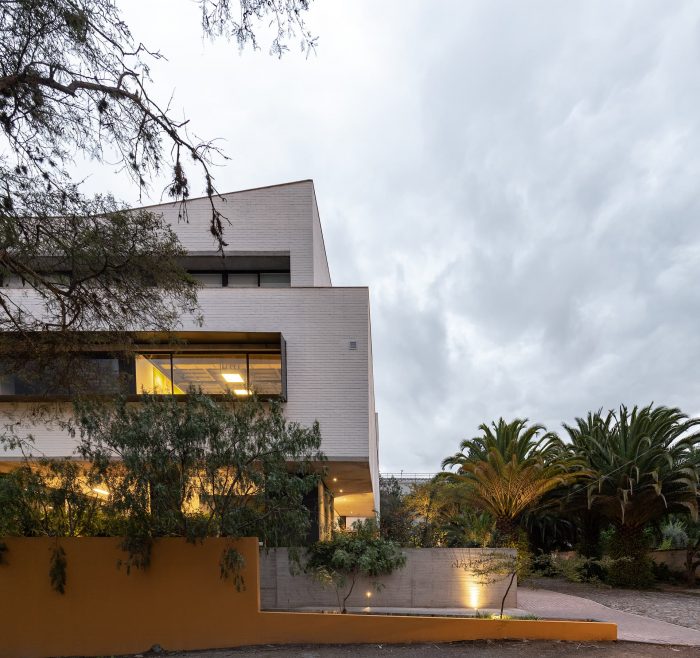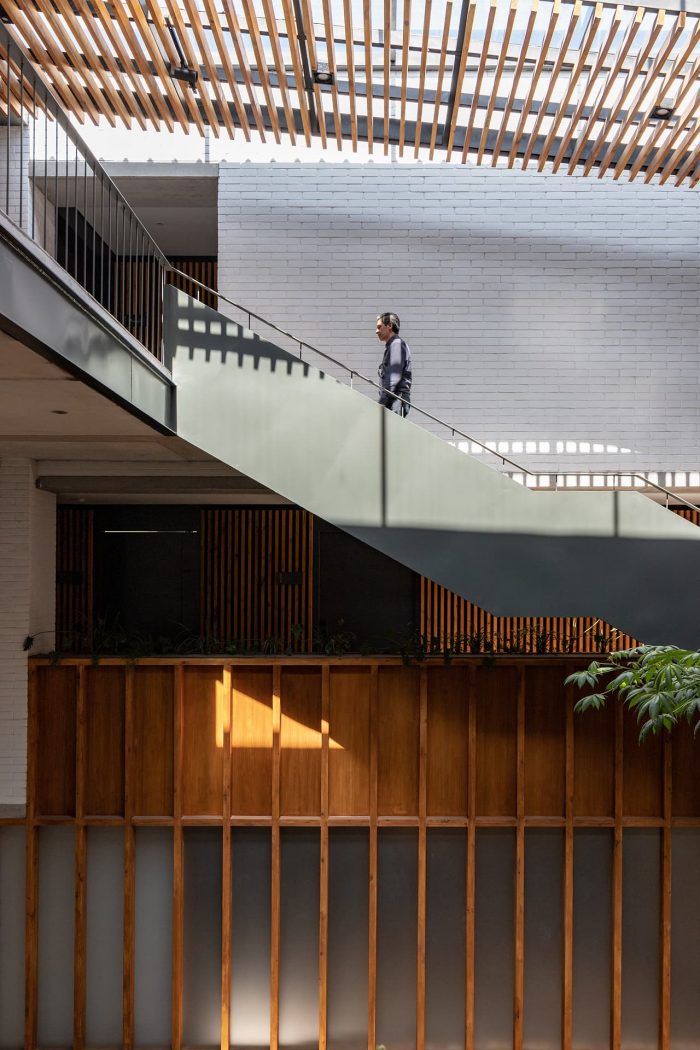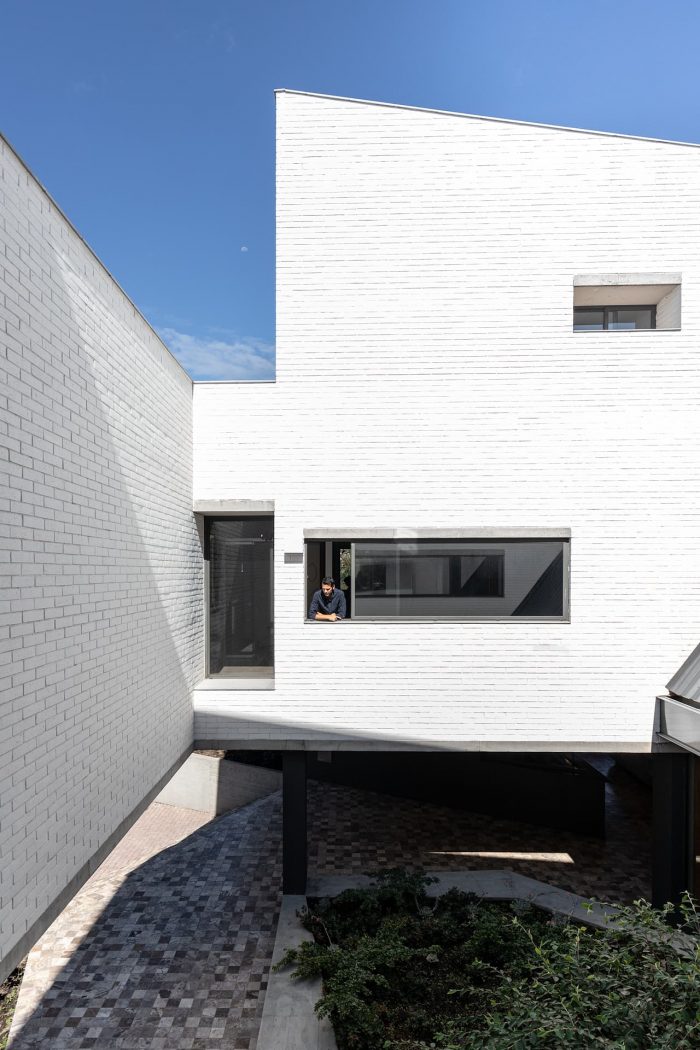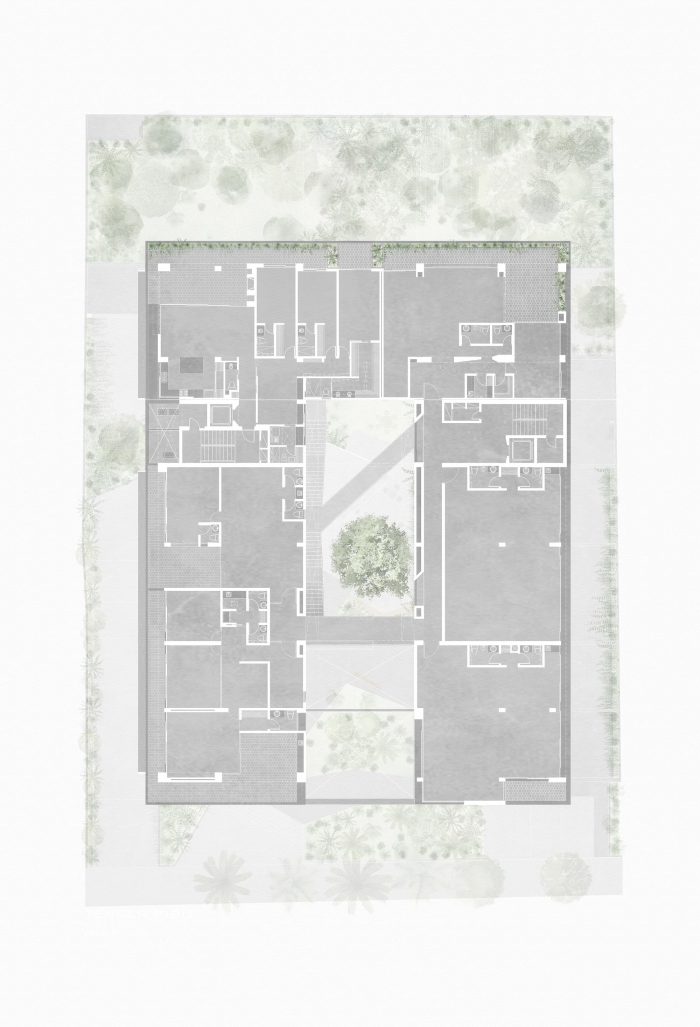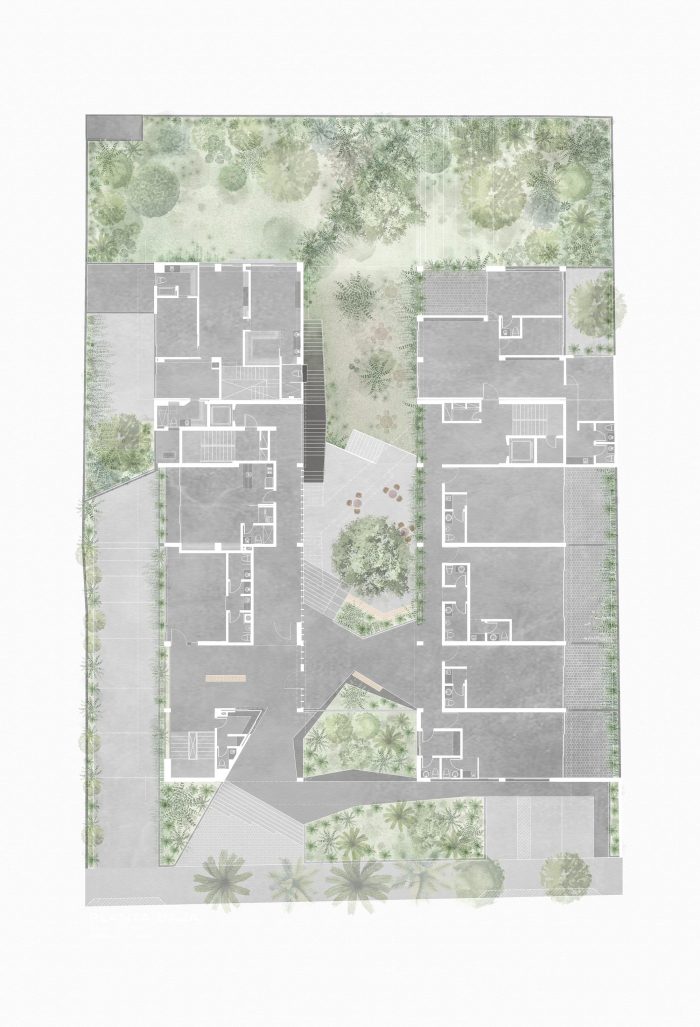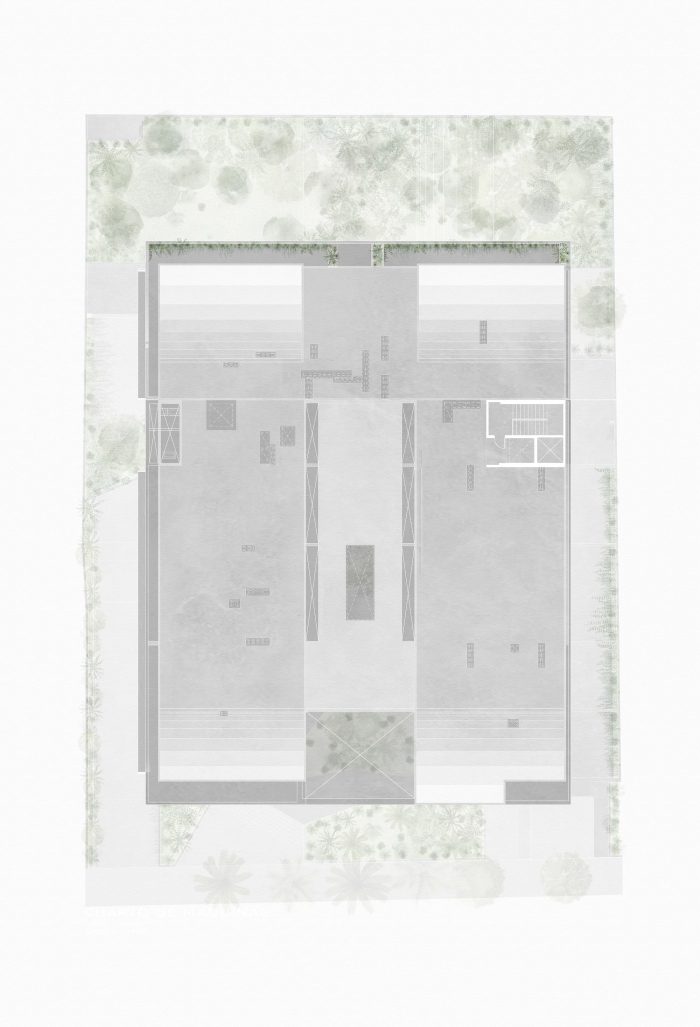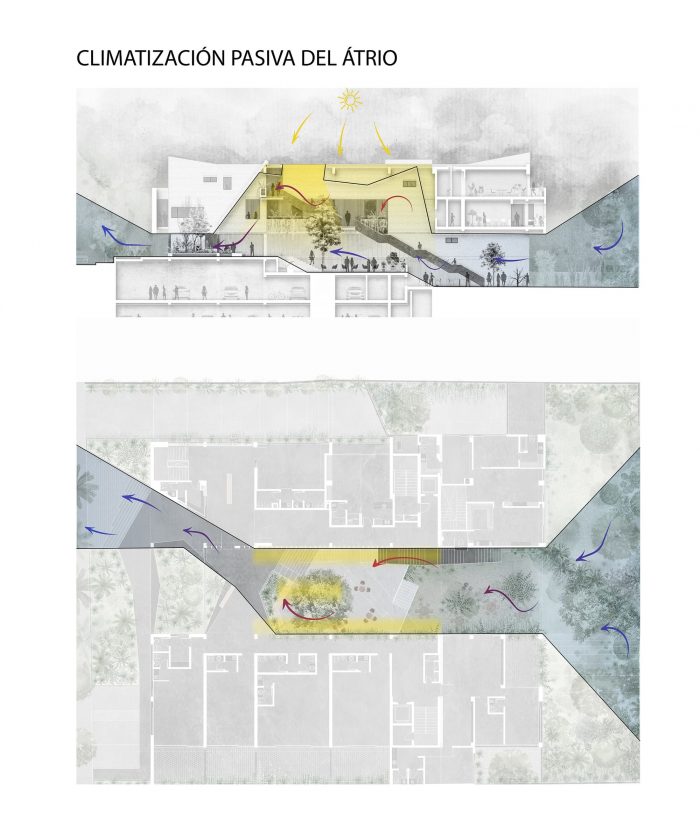通巴科谷地。Tumbaco山谷已经成为一个高度发达的住宅区,近年来实现了人口的大幅增长。居住在谷地的绝大多数人都在城市工作,这意味着这个地区正在变成一个小型的宿舍镇。这导致了:长途旅行、车辆拥堵、污染和扩展的发展,缺乏服务和设备。该项目是由一群人的兴趣而产生的,以解决这个问题。因此,提出了一个混合用途的建筑(办公室和住房),促进某些概念:工作离家近,工作和生活与自然接触,以及城市的整合。
The Tumbaco Valley: Tumbaco Valley has become a highly developed residential zone, achieving in recent years a significant population growth. The vast majority of people who inhabit the valley work in the city, which has meant that this area is being transformed into a small dormitory town. This resulting in: long journeys, vehicular congestion, pollution and an extended development, lacking services and equipment. The project emerges from the interest of a group of people to attack this problem. Thus, a mixed-use building (offices and housing) is proposed, promoting certain concepts: work close to home, work and live in contact with nature, and consolidation of the city.
这个地方。该地拥有重要的自然遗产:有数十年历史的ceibos, jacaranda, acacias, carobs, avocados。这片土地的直接环境是一个安静的地方,并处于巩固的过程中。Natura试图悄悄地插入这种环境中,避免引人注目,并试图以一种微妙的方式参与。植入和地形。该建筑是基于对现有树木的识别和定位而实施的。由于这些树木大多位于物业的周边,建筑体量容纳了它们,并被安排在土地的中央部分,释放出其正面、背面和侧面的边界。不能保存的树木被移到苗圃一段时间,直到它们被重新安置在项目本身。建筑物留下一个大的内部空间(中庭),成为办公项目的核心。该地块在纵向上有一个负坡。建筑物在截面上适应了土地的自然水平,从而能够保护完整的植物物种,并在不同的水平上实现了空间的连续,为建筑的路线和循环提供了经验。
The place: The site has an important natural heritage: ceibos, jacaranda, acacias, carobs, avocados of several decades of existence. The immediate environment of the land stands out for being a quiet place and in process of consolidation. Natura seeks to insert itself in this context silently, avoiding the highlight and trying to engage in a subtle way. Implantation and topography: The building is implemented based on the recognition and location of existing trees. Since most of these are located on the perimeters of the property, the built volume accommodates them and is arranged in the central part of the land, releasing its front, rear and side boundaries. The trees that cannot be saved are moved to a nursery for a while, until they are relocated in the project itself. The built mass leaves a large interior space (atrium) which becomes the heart of the office project. The land has a negative slope in the longitudinal direction. The building adapts in section to the natural levels of the land, in such a way to be able to conserve the intact plant species, as well as, achieving a succession of spaces at different levels that contribute to the experience of routes and circulations of the building.
渗透性。我们每天都会看到一个令人担忧的城市,那里的建筑都是朝向街道的墙,用户没有互动,因为他们从他们的车到他们的家/办公室的门。面对这种现实,Natura提出了一个邀请你进入的建筑,鼓励你去发现它。楼梯和外墙上的水平 “带子”,暗示了通道的存在。一旦通过这一层的压缩空间,该项目就会通过一个大型中庭进入。这个中庭成为一个连接空间。一个能在用户之间产生路径和相遇的空间。此外,该建筑还设法在私人和公共之间建立联系。在外部空间和内部空间之间,以给予物理、视觉、声音和感官的连接。建筑与社会 意识到建筑对人产生的影响,我们规划了一个产生多功能空间的建筑,它也可以被社区用作展览、健康、文化和艺术的场所。
Permeability: Every day we see with great concern a city, where buildings are walled towards the street, where users do not interact because they move from their car to the door of their home / office. Faced with this reality, Natura proposes a building which invites you to enter, encourages you to discover it. The stairs and a horizontal “band” on the facade, hint the access. Once this compressed space of one floor is passed, the project is entered through a large-scale atrium. This atrium becomes a connector space. A space that generates paths and encounters between users. In addition, the building manages to establish connections between private and public. Between the outside space and the interior space, in order to grant physical, visual, sound and sensory connectivity. Architecture and society Aware of the impact that architecture generates on people, we have planned a building that generates versatile spaces that can also be used by the community as places of exhibition, health, culture and art.
Architects: Diez+Muller Arquitectos
Area : 6841 m²
Year : 2019
Photographs :JAG Studio
Lead Architects : Felipe Muller, Gonzalo Diez, Alvaro Borrero, Hugo Navarrete, Paola Picciallo
Construction : Diego Cueva
Inspection : Carlos Sarzosa
Landscape : Clemencia Echavarría
City : Tumbaco
Country : Ecuador

